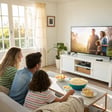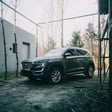Falls represent one of the most serious health risks facing older adults today. With advancing age comes increased vulnerability to slips and falls that can lead to severe injuries.
Understanding Fall Prevention Technology for Seniors
The landscape of elderly safety products has evolved dramatically in recent years. Modern fall prevention devices combine sophisticated technology with practical design to create solutions that are both effective and unobtrusive.
Janet from Cleveland told me last week, "After my dad's second fall, we invested in some new tech that's given our whole family peace of mind."
Fall prevention technology now includes everything from simple modifications to advanced monitoring systems. The market offers solutions ranging from $20 anti-slip aids to comprehensive systems costing several hundred dollars. According to the National Council on Aging, these investments often pay for themselves by preventing costly medical treatments.
Smart Sensors and Alert Systems
Fall alarms for seniors have become increasingly sophisticated. Modern systems can:
- Detect unusual movements indicating a potential fall
- Automatically alert caregivers or emergency services
- Track patterns to identify fall risk factors
The SteadyTech™ anti-tip device from Maxwell Thomas® represents an innovative approach to preventing furniture-related falls. This technology helps prevent recliner tipping in senior living environments, addressing a common but often overlooked hazard.
Mobility Aids for Seniors: Beyond the Basic Walker
Traditional mobility aids have undergone significant improvements. Today's options include:
Walking aids with built-in fall detection Adjustable-height walkers with ergonomic grips Lightweight, foldable designs for portability
I've noticed these newer models eliminate that institutional look my grandmother hated about her old walker. They're sleeker and less medical-looking while providing even better support.
The Mayo Clinic recommends using properly fitted assistive devices as one of their top strategies for fall prevention. Your healthcare provider might suggest a specific type based on individual needs and living arrangements.
Home Safety Tips: Creating a Fall-Proof Environment
Preventing falls at home starts with addressing environmental hazards. Some essential modifications include:
Lighting and Visibility Improvements
Store flashlights in accessible locations throughout the house in case of power outages. Consider motion-activated night lights for bathrooms and hallways.
The bedroom-to-bathroom path deserves special attention since nighttime bathroom trips pose significant fall risks for seniors.
Anti-Slip Aids for Key Areas
Kitchen and bathroom floors present particular dangers. Anti-slip aids such as:
- Textured floor treatments
- Non-slip mats for showers and tubs
- Grip tape for steps and thresholds
These simple modifications cost between $15-$50 but dramatically reduce fall risks in high-danger zones.
How Do I Choose the Right Fall Prevention Devices?
Selecting appropriate elderly safety products depends on several factors including mobility level, living situation, and specific health concerns.
Medical alert systems with fall detection have become increasingly popular. The National Council on Aging highlights these devices as effective safety nets, particularly for seniors living alone. Modern systems are waterproof, comfortable to wear, and connect directly to emergency response teams.
For those concerned about privacy, there are now camera-free monitoring options that use pressure sensors or motion detection technology instead.
Safe Living for Elderly: A Comprehensive Approach
Effective fall prevention combines technology, environmental modifications, and lifestyle adjustments. Regular exercise programs focusing on balance and strength provide a foundation for stability.
The National Institute on Aging recommends discussing fall risks with healthcare providers, who can evaluate medication side effects that might increase dizziness or affect balance.
Remember that senior home safety isn't just about preventing accidents—it's about preserving independence and quality of life. The right combination of fall prevention devices can help seniors maintain their autonomy while giving family members peace of mind.
For more information on specific products and approaches, visit the National Council on Aging's resource page or consult with a healthcare provider specializing in geriatric care.
Tags

About Elliot Hargrave the Author
Elliot Hargrave is a seasoned travel expert with over a decade of experience in crafting bespoke travel itineraries tailored to individual interests and needs, ensuring each journey is as unique as the traveler themselves.
Recommended Articles
Top Streaming Services in the US Ranked for 2025
Discover the top streaming services in the US for 2025, ranked by content variety, user experience, and value for all entertainment needs.
Hyundai’s Color-Changing SUV: The Innovation Everyone’s Talking About
Hyundai's latest innovation is turning heads in the automotive world with its futuristic color-changing SUV technology, allowing drivers to transform their car's color at the touch of a button. This mesmerizing display of shifting hues, showcased on the popular Hyundai Tucson, uses advanced electronic panels to create patterns and gradients, offering a breath-taking reinvention of vehicle personalization that has both car enthusiasts and everyday drivers buzzing with excitement.
Silverado’s Boldest Color Yet—See The Stunning Reveal
Chevrolet has set the truck world abuzz with the daring introduction of "Radiant Copper" to the 2025 Silverado lineup, marking a bold departure from traditional hues and sparking heated discussions among enthusiasts. Beyond the striking color, Chevrolet's innovative paint technology promises enhanced durability and depth, while whispers of limited edition models with unique flair could captivate those eager for exclusivity.
Meet Hyundai’s Color-Changing SUV: See The Magic In Action
Imagine transforming your SUV's color with a tap of your smartphone, thanks to Hyundai's groundbreaking color-changing technology. This revolutionary feature, along with adaptive interiors and cutting-edge personalization, signals a new era where vehicles are not only practical but emotionally connected extensions of ourselves—an innovation journey that's as much about the heart as it is about the road.
Hyundai Tucson New Color
The 2025 Hyundai Tucson comes alive with an expanded palette of nine stunning new color options, including standout hues like Rockwood Green and Atlantis Blue, allowing drivers to express their style and personality through their SUV choice like never before. Coupled with a bold, redesigned exterior and cutting-edge technology enhancements, the latest Tucson positions itself as a must-consider option in the compact SUV market, promising a blend of sophisticated aesthetics and modern utility.




